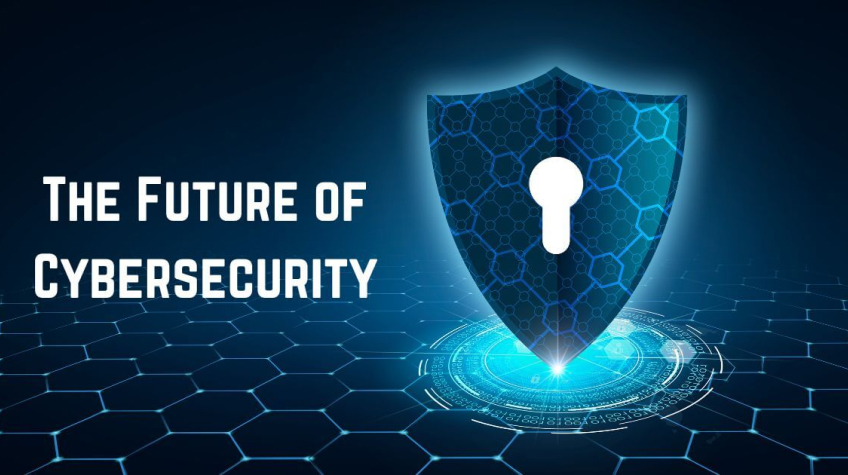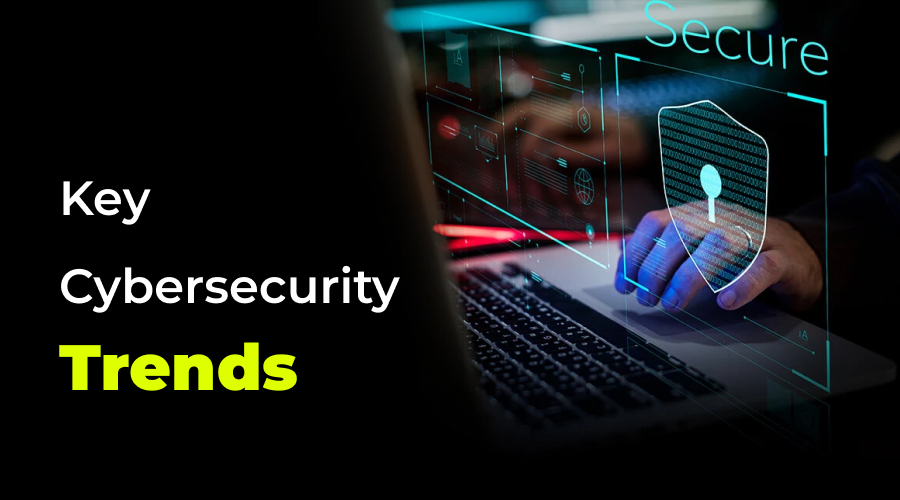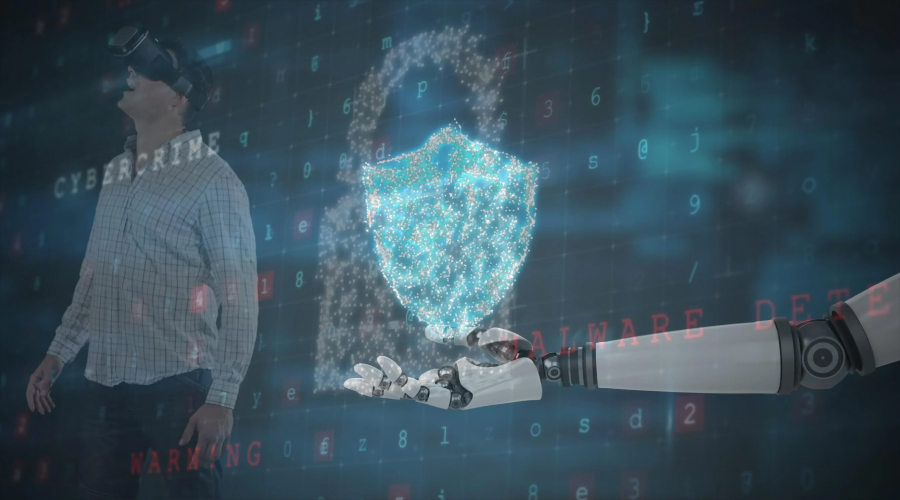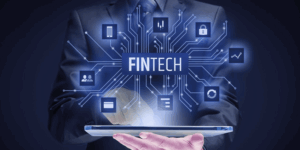
Cyber threats change on a daily basis, and so must cybersecurity. This blog looks at the trends and predictions that will shape the future of cybersecurity and help businesses and individuals get ahead of the threats.
Cybersecurity is always changing with new technologies and new threats emerging. Hackers get smarter, and attacks happen faster than ever. To stay safe, businesses and individuals need to know what’s next. As more people work remotely, use cloud services, and smart devices, the risk of attack increases.
Criminals use AI to find vulnerabilities and launch targeted attacks. Meanwhile, security teams need to act fast to defend systems, protect data, and stay compliant with growing regulations. Cybersecurity is no longer just an IT issue, it affects every part of a business. In this blog, we’ll look at the current trends and what’s to come.
Key Cybersecurity Trends

1. AI Drives Intelligent Threat Detection
Security teams utilize artificial intelligence systems for rapid threat detection and immediate response protocols. AI systems examine behavioral data to identify deviations that trigger immediate responses.
AI delivers faster and more precise threat detection than human analysts are capable of achieving, as cyber threats continue to become more complex. Security organizations implement AI technology to identify malware, perform threat hunting, and operate their security functions autonomously.
2. Zero Trust Becomes the Standard
Never trust, always verify.” These core concepts form the fundamental principle behind Zero Trust Architecture (ZTA). ZTA demands that all devices, users, and applications inside and outside a network be evaluated as possible security risks. The Zero-Trust model operates under the breach assumption by dynamically verifying every access request.
Zero Trust Architecture has gained wider acceptance among corporate security strategies. The upcoming years will mark Zero Trust as the standard model across all industries. Businesses will integrate micro-segmentation, identity-based access, and continuous authentication into their fundamental cybersecurity strategy framework.
3. Cybersecurity Mesh Gains Traction
Organizations now lack protection as remote work and cloud computing services have increased significantly. A Cybersecurity Mesh Architecture (CSMA) distributes security controls throughout multiple networks and enables organizations to monitor everything from a single operational frame.
The security architecture provides unified visibility to interoperate between various devices and keep breach effects limited. Organizations use this adaptable model to support their hybrid infrastructure needs.
4. Cloud Security Becomes Mission-Critical
Cloud adoption is growing, but so are the vulnerabilities. Misconfigurations, insecure APIs, and poor access control are the attack vectors. Organizations are prioritizing cloud native security tools like Cloud Security Posture Management (CSPM) and Cloud Workload Protection Platforms (CWPP). Unified visibility and policy enforcement is key.
5. Ransomware Grows Smarter
Ransomware is getting more aggressive and targeted. Criminals are now using double extortion tactics, threatening to leak data even after encryption. Some attackers are running ransomware as a service, making it wide open and low barrier to entry for cybercrime. Defenders need layered protection, employee training, and rapid response protocols.
6. Regulations and Compliance Tighten
Governments across nations have adopted stronger cybersecurity requirements. The regulatory environment heightens its complexity through the introduction of GDPR, CMMC, and SBOM mandates.
Organizations implement security compliance as part of their defensive strategy through automated systems, which help them fulfill changing regulatory requirements.
7. Threat Intelligence Sharing Improves
Every organization needs the assistance of other entities to combat cybersecurity threats. Security defenders must adopt a collaborative approach to combat threats, similarly to how attackers do, as they share resources and tools. Information sharing will establish itself as a foundational element for cyber defence systems in the upcoming years.
Public and private organizations will develop transparent platforms that facilitate the exchange of indicators of compromise (IOCs) and tactics, techniques, and procedures (TTPs) information. The marketplace for MITRE ATT&CK and ISACs (Information Sharing and Analysis Centres) will continue to grow.
Bold Predictions for the Future of Cybersecurity

1. Post-Quantum Encryption Will Become a Must
Quantum computer capabilities continue to increase. The future advancements in quantum computing technology will break present-day encryption methods that protect email communications, bank accounts, and passwords. Data protection today does not guarantee security, as quantum technology can potentially break these defences in the future.
Security teams intend to adopt encryption methods that quantum computers will never be able to decrypt. Upgrades toward protection will become necessary for all users in the near future.
2. Companies Will Focus More on Cyber Resilience
No system is 100% secure. Every security system has its weaknesses that attackers will inevitably discover. The emphasis will rise on cyber resilience because organizations seek methods to operate despite security attacks and conduct swift post-incident recoveries.
Businesses will develop robust backup strategies with employee training and emergency procedures for incident response. The organization will prepare rapid recovery strategies while sustaining customer trust and minimizing downtimes.
3. The Cybersecurity Skills Gap Will Lead to More Automation
The number of available cybersecurity specialists does not match the requirements of all available positions. The increasing number of cyber threats creates a serious problem due to the widening talent shortage. Companies will depend on intelligent tools that can handle some security tasks to address this challenge.
These tools act as detectors by identifying threats, taking action against small incidents, and producing notifications upon system failures. Companies will enhance their team development through online curriculum and certification programs, while simultaneously extending employee training programs.
4. Behavioral Biometrics Will Replace Passwords
User passwords are simple to remember and prone to various forms of theft through breaches. Online security systems with two-factor authentication remain vulnerable to hacking attacks. Behavioral biometrics will become the primary authentication method soon.
This means your devices can identify typing patterns, movement of your mouse, and phone holding behavior. Each person has distinct patterns that make their biometric data as one-of-a-kind as fingerprints. Background security runs seamlessly without requiring additional client actions.
5. Software Supply Chains Will Get More Attention
Many businesses operate with software developed by third-party developers and open-source programmers. Attackers exploit unknown vulnerabilities found in software components to penetrate extensive systems. The SolarWinds attack occurred precisely in this manner.
Research indicates that future businesses will enhance their procedures for scrutinising software supply chains. A software bill of materials (SBOM) serves as the required document for revealing all code components. The practice enables teams to uncover software flaws quickly and destroy security vulnerabilities that attackers can exploit anonymously.
6. Digital Twins Will Help Test Cyber Defenses
Digital twins are computer simulations of actual systems. In the future, they will be used by cybersecurity teams to simulate responding to attacks without risking actual systems.
The implementation of digital twins creates space for testing security tools and providing teams the ability to simulate threats to determine optimal solutions. The program functions similarly to a flight simulator and specifically applies to cyberattacks. The practice enables teams to stay alert about their security threats, since they can identify potential vulnerabilities before malicious actors seek them out.
Conclusion
Cybersecurity is no longer behind the scenes, it’s driving strategy, resilience, and trust. The future will require more than firewalls and passwords. Organizations must adopt AI, Zero Trust, automation, and quantum-resistant encryption.
By understanding today’s trends and tomorrow’s challenges, businesses can secure their future. Contact us Today! The key is to be proactive, invest in innovation, and build security from the inside out.






